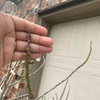Sweet Olive (Osmanthus Fragrans) Questions
Joeray
16 years ago
Related Stories

SPRING GARDENINGTop 10 Scented Plants for Your Garden
A palette of perfumed plants can transform even the smallest of gardens into a sensory delight
Full StoryI live in South Louisiana, where sweet olives are plentiful and common, and I have a couple of questions about them. I have two plants.
I've read that one should be cautious about fertilizing them but I'm wondering if anyone has fertilized them some and with what and did it increase growth or blooming?
Second, Is the Fudingzhu variety much better than the sweet olive? No one has ever heard of it around here.


longriver
sib5
Related Professionals
Windham Landscape Architects & Landscape Designers · Owings Mills Landscape Architects & Landscape Designers · Wheeling Landscape Architects & Landscape Designers · Hartford Landscape Contractors · Wilmington Landscape Contractors · Amesbury Landscape Contractors · Cudahy Landscape Contractors · Fort Atkinson Landscape Contractors · Framingham Landscape Contractors · Hickory Hills Landscape Contractors · Mashpee Landscape Contractors · Panama City Beach Landscape Contractors · Seymour Landscape Contractors · West Allis Landscape Contractors · Kingsburg Landscape Contractorslongriver
Virginia
jimshy
longriver
jimshy
longriver
daxin